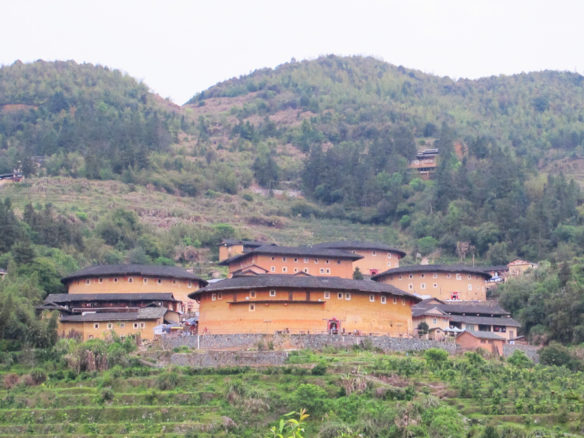
On a trip to China with the Global Heritage Fund, we explored some truly incredible, off-the-beaten-path historical sites, such as Tian Luo Keng, a cluster of round, earthen tulou residences.
Treasures of China’s Heritage: Touring with the Global Heritage Fund
(Second of a Seven-part Series)
Nanjing and Pinghe Counties, Fujian
I recently had the privilege of taking a nine-day trip to China in the company of board members of the Global Heritage Fund (GHF)—an organization devoted to supporting underdeveloped rural areas worldwide. Although I’d previously traveled extensively in China, this unusual excursion was uniquely enriching and memorable. It’s my pleasure to share this experience with you in a series of recollections illustrated primarily by my personal photographs. Links to the other installments in this series can be found at the end of this article.
DAY 2: ARRIVAL IN ZHANGZHOU CITY
After landing in Fujian’s modern city of Xiamen and exploring earthen tulou buildings in the countryside on our first day, we proceeded to the historic port town of Zhangzhou and then to Pinghe and Nanjing counties, where we visited tulous of a different style.
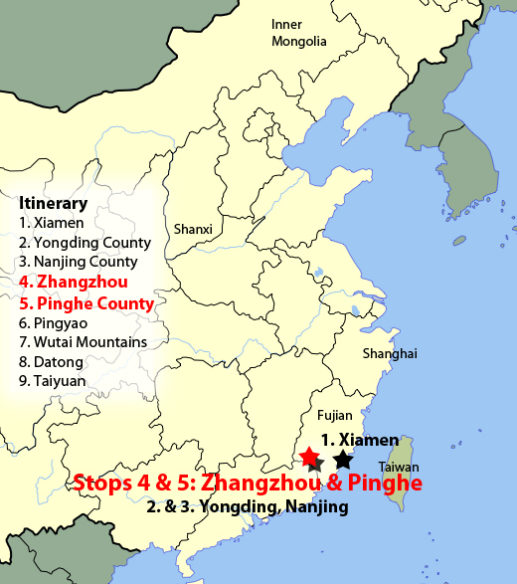
Only forty-three miles from the costal city of Xiamen lies Zhangzhou, a second-tier city with a population of nearly five million. Once a big port town known for trafficking in silk and sugar, today it supports agriculture, flour-milling, wine-making, tea-curing, papermaking, printing, the manufacture of jute sacking, and narcissus cultivation.
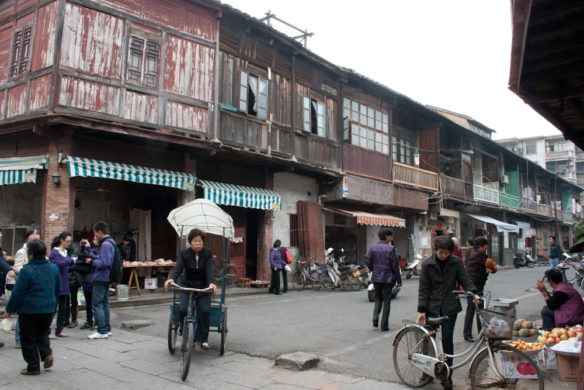
Getting off the bus in Zhangzhou’s Old Town felt like stepping back into another era.

Thanks to the Zhangzhou’s history of trading, the architectural style is eclectic, even including some Western-European influence.

The streets are lined with well-preserved two-story homes and offices from the late nineteenth and twentieth centuries.

Some of the older buildings are starting to decay, but, happily, many are being restored.
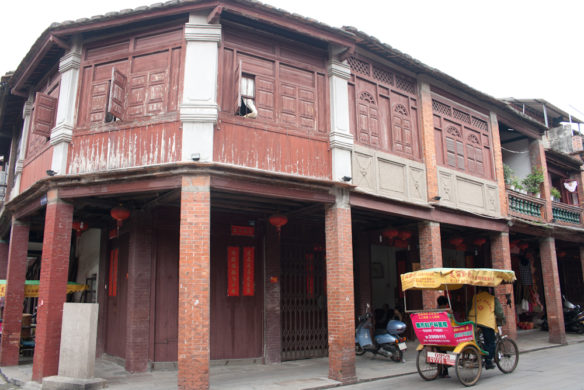
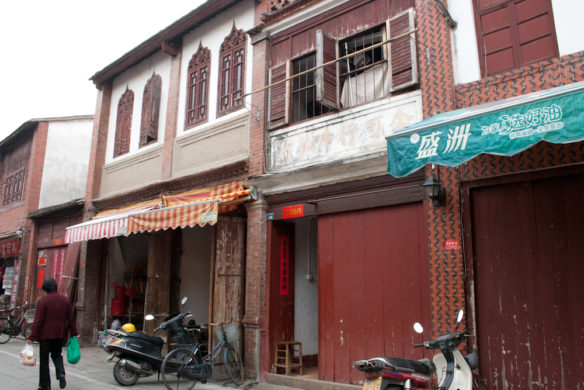

MODERN ZHANGZHOU
The modern area of town is a far cry from Zhangzhou’s Old Town, featuring modern buildings, contemporary shops, and endless traffic.
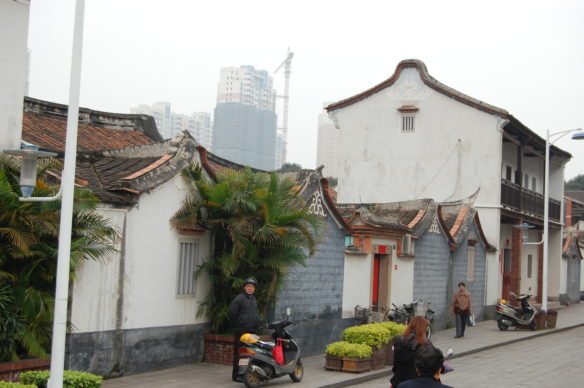
Notice the new high-rises being built in the background, which is happening all over China, adding pressure to preserve these historic towns before it’s too late.
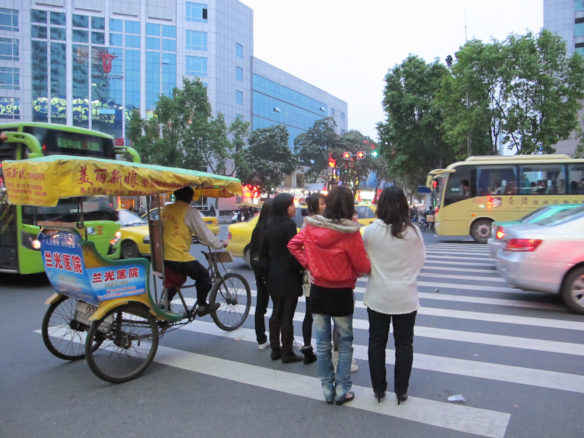
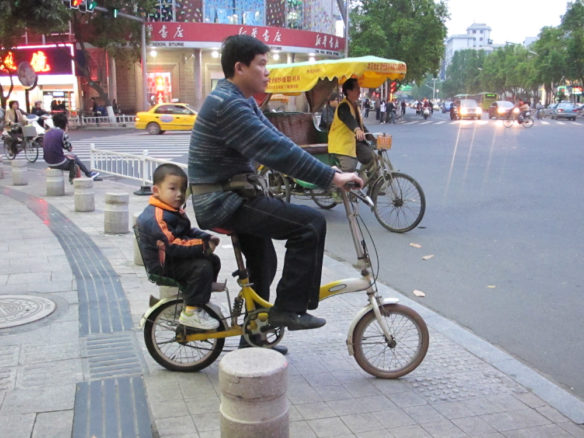
I like to browse in local shops where I can find regional products and designs, so I enjoyed our stop at a large store filled with flat-screen TVs, refrigerators, and small appliances bearing Chinese brands unfamiliar to me. Our trip leader, GHF co-founder Jeff Morgan, noted that Zhangzhou is reminiscent of China in the 1980s, when few imports could be found anywhere—only indigenous goods.
I quickly let go of my notion that I might find bargains on this trip. My Canon G11 camera, for example, cost me $500 in the U.S. and was on sale here for $570.

Humidifiers.

Modern rice cookers.

Washers and dryers.
OFFICIAL BANQUET DINNER
On our first night in Zhangzhou, Madame Yang Li Hua, Director of the Cultural Relics Office, hosted a traditional Chinese banquet for our group and welcomed us with a customary Chinese toast followed by course after course of delicious regional food.
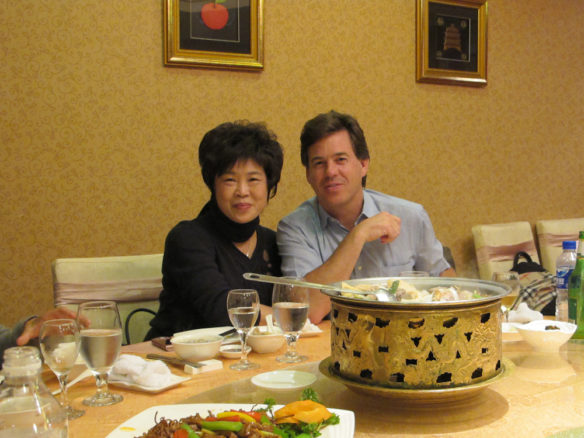
Madame Yang, Assistant Professor of China Cultural Heritage and a member of the Cultural Relic Administration Committee, with GHF co-founder Jeff Morgan.
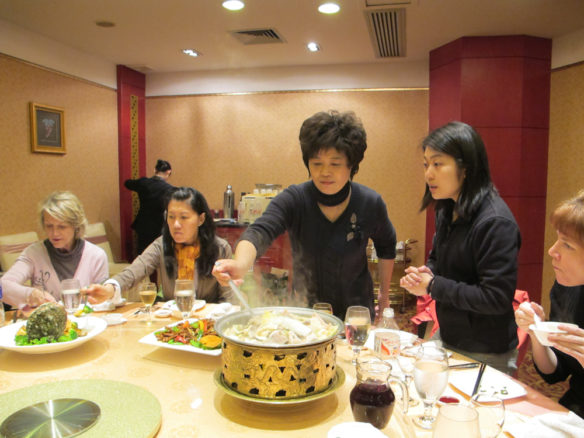
Following Chinese custom, our hostess, Madame Yang, graciously served her guests the first course.
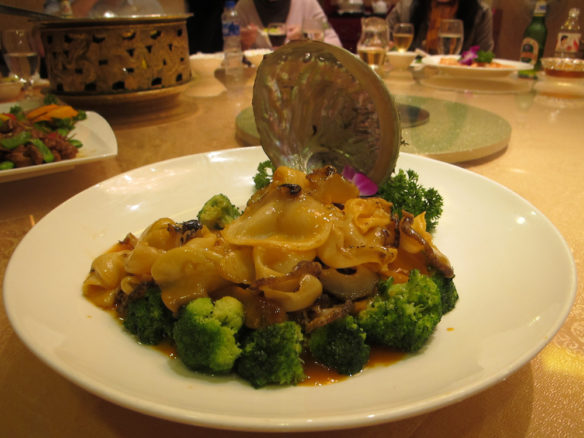
Among the abundance of food was abalone served in its shell. Convention requires that guests never go home hungry—no fear of that in our case!
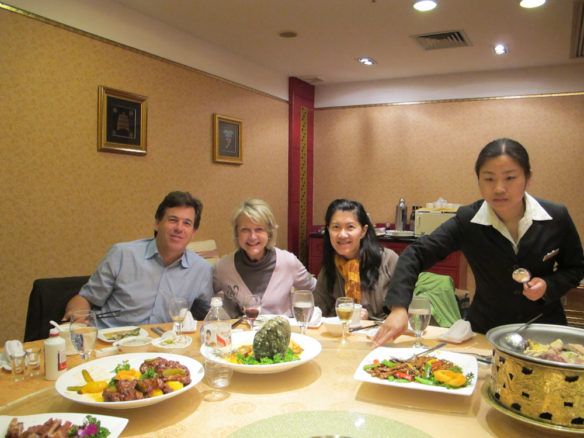
Jeff Morgan, Judy Koch, and Jasmine Arneja.
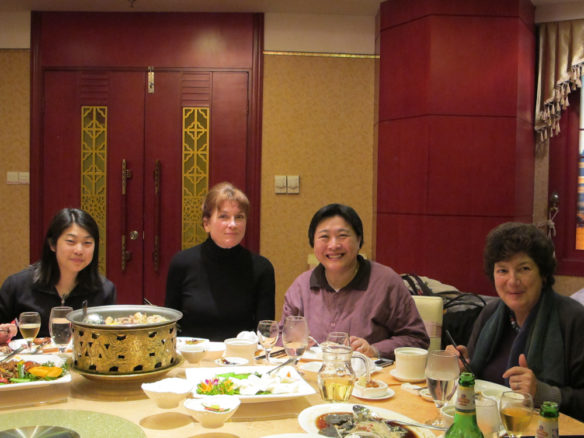
Kuanghan Li, Lucie Jay, Linda Chen, and Edwina Sassoon.
Ganbei (literally, “bottoms up”) is the word for “toast,” and drinking is customary at formal banquet gatherings, where business and government officials bond, tell stories, and enjoy entertainment—all while determining whether their cohorts are trustworthy.
A lot of bai jiu—a traditional Chinese distilled liquor—is consumed and guests are expected to be able to hold their own in the drinking department. I wasn’t sure whether that “rule” applied to women, but Madame Yang set me straight: “You have to learn to drink like a man to succeed in their world,” she insisted.
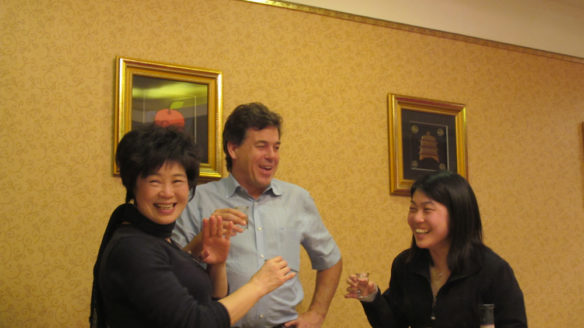
Madame Yang, Jeff Morgan, and GHF’s China Program Director Kuanghan Li toasted one another throughout the evening.
DAY 3: A CONFUCIAN TEMPLE AND OFF TO PINGHE COUNTY
On an excursion that Madame Yang organized for us, we left early the next morning for a visit to an ancient Confucian temple. After that, it was off to Pinghe County to visit more tulous.

As we walked through Zhangzhou’s old city, we passed under the grand, Chinese-style gates.
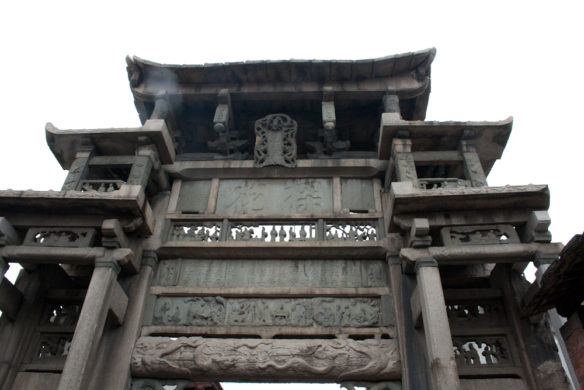
A closer look revealed the intricate details carved into the gate.

Jeff Morgan, Madame Yang, Jasmine Arneja, and Kuanghan Li at the Confucian temple.

Our entourage: Judy Koch, Jeanne Lawrence, Cathy McMurtry, Linda Chen, and Sandee McCaffrey.
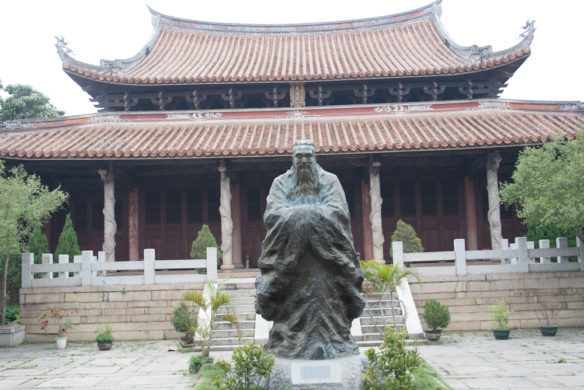
A large statue of Confucius stood in the courtyard of the temple.

A dragon led the way up the stairs to the incense burner, a ubiquitous feature of Chinese temples.

Young children were learning to read and pronounce Chinese in an open-air classroom on the Confucian temple grounds.
TEA WITH MADAME YANG
Ever the gracious hostess, Madame Yang invited us to her headquarters at the Office of Cultural Relics. She won a UNESCO award for her planning and preservation efforts in this historic area. I hope she’ll succeed in safeguarding Zhangzhou’s original character.
“Tea culture” is very important in China; the ritual tea ceremony originated in Fujian, where many types of tea are grown and its appreciation is central to everyday life.
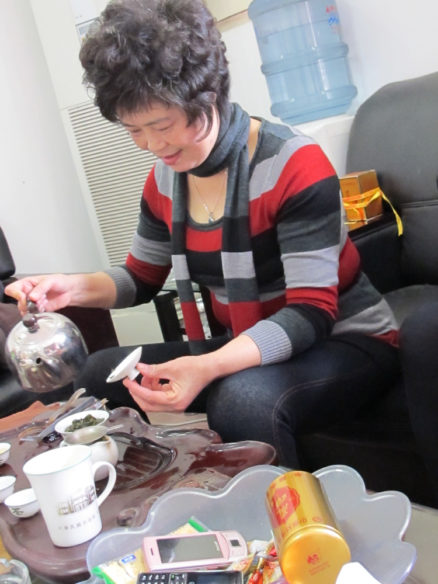
After our tour, Madame Yang performed a traditional, formal tea ceremony called Gong Fu Cha (“making tea with effort”), brewing the famous Fujian tea.
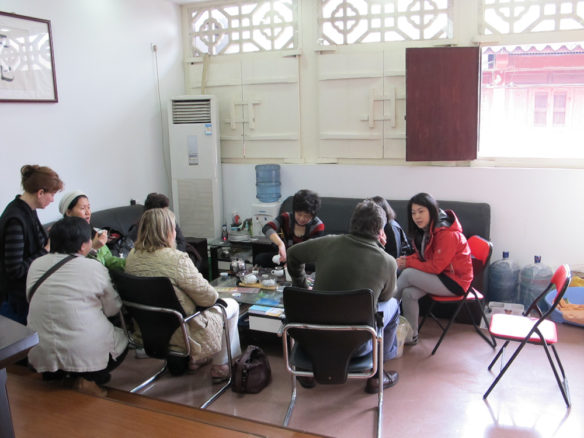
We enjoyed learning about the ritual tea ceremony firsthand.
LOCAL NEIGHBORHOOD
As we strolled around the old city center, I snapped photos of street scenes, including old men in the town square playing cards and mahjong, smoking, chatting, and generally enjoying life, and people going about their daily lives.
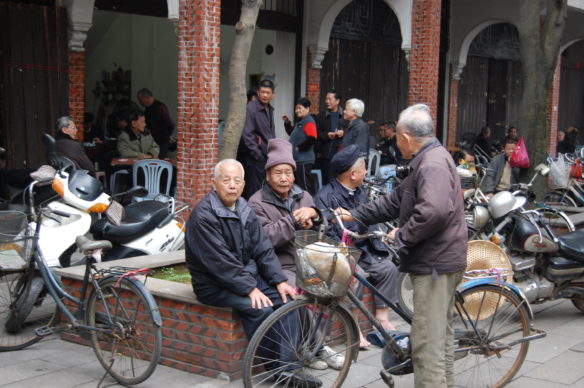
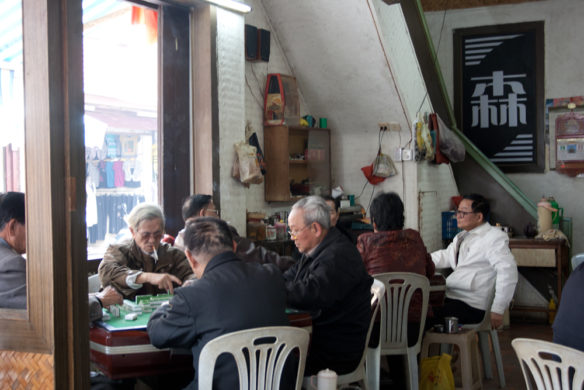
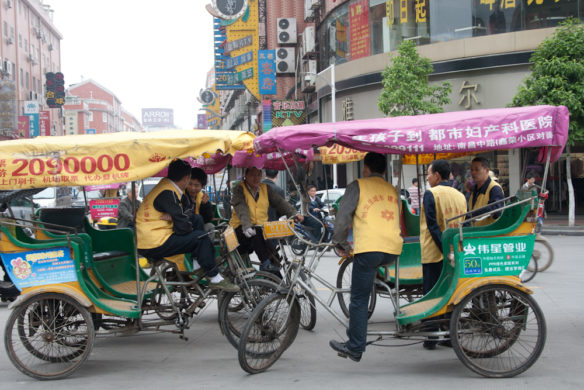

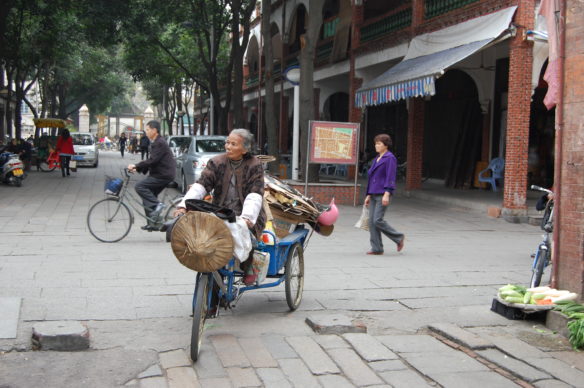

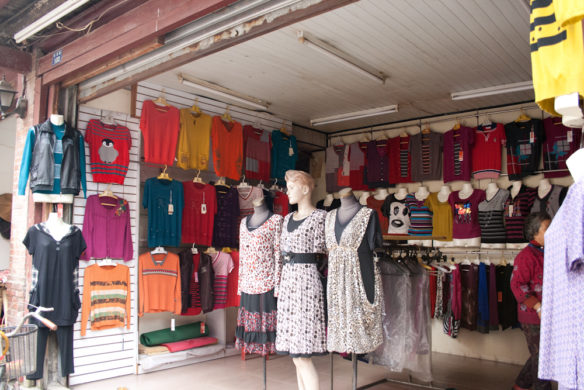
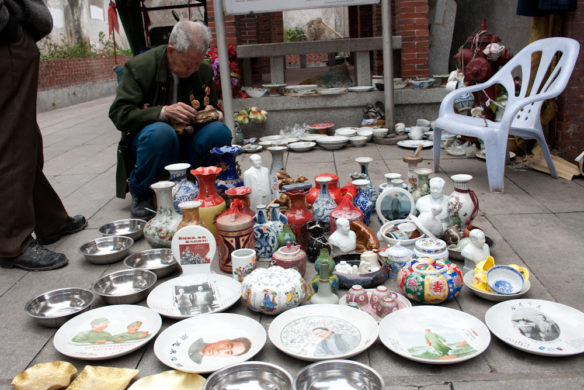
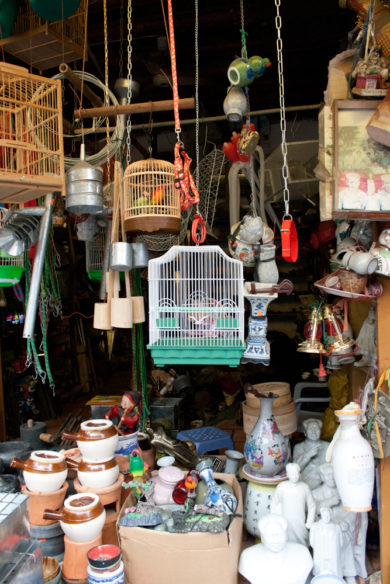
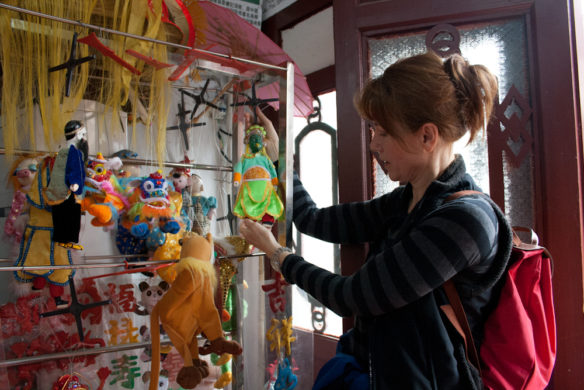

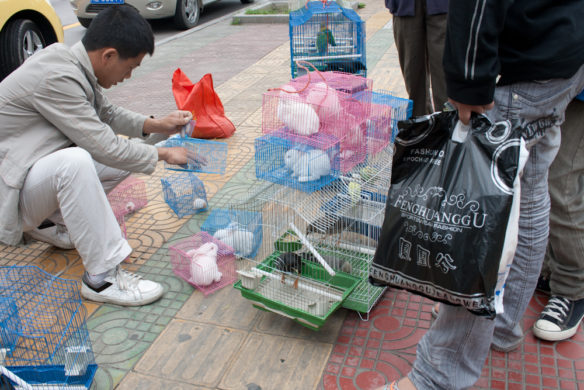
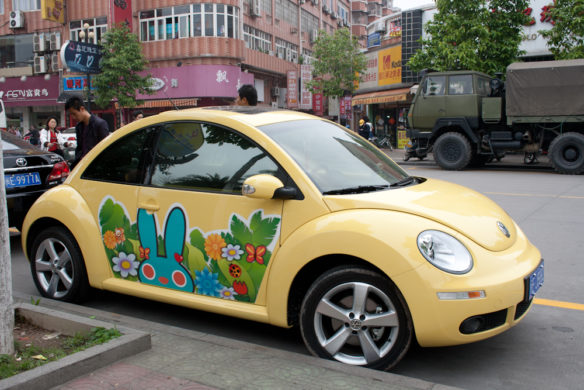
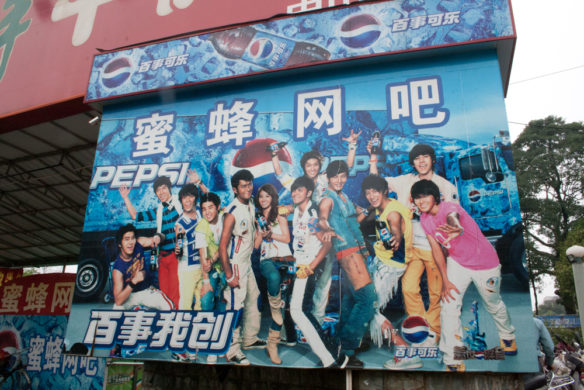
THE DRIVE TO GHF’S SHENGWU LOU PROJECT IN PINGHE COUNTY
Our one-hour ride to GHF’s Shengwu Lou project carried us through mountainous green countryside, where we glimpsed new communities sprouting up next to traditional small villages with factories, rice fields, and Fujian tea plantations.
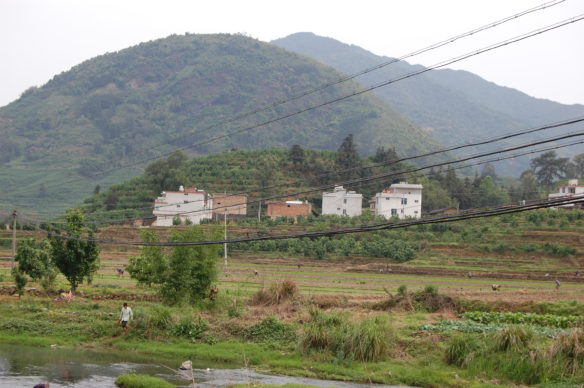
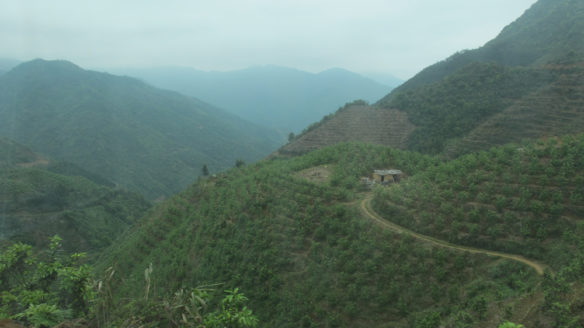
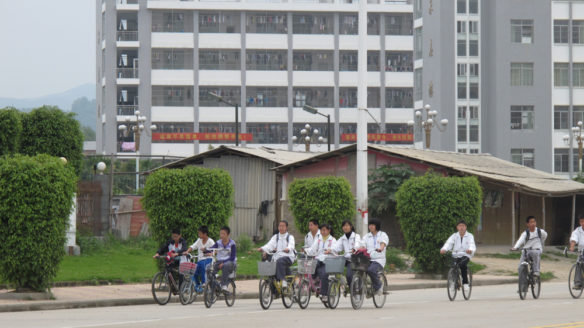
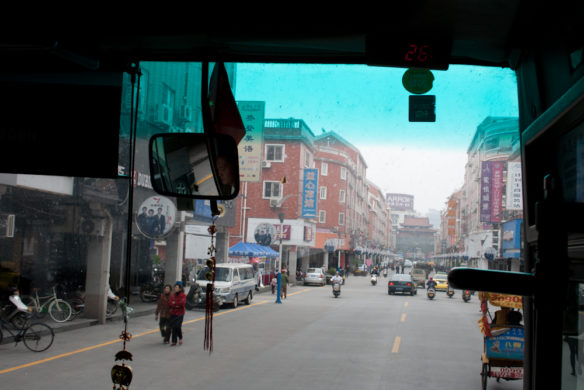
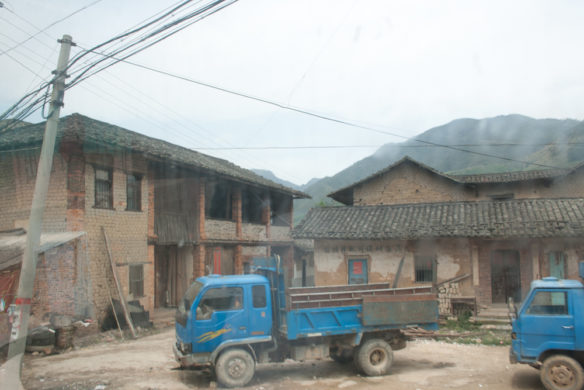
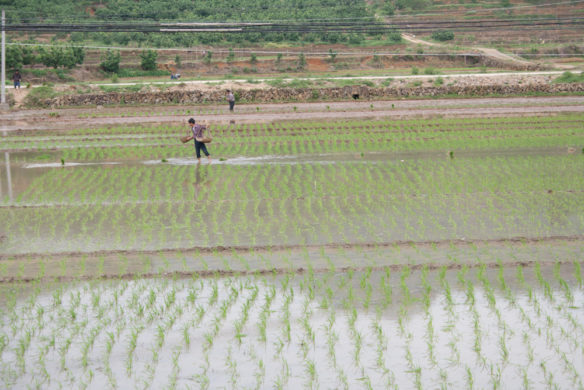
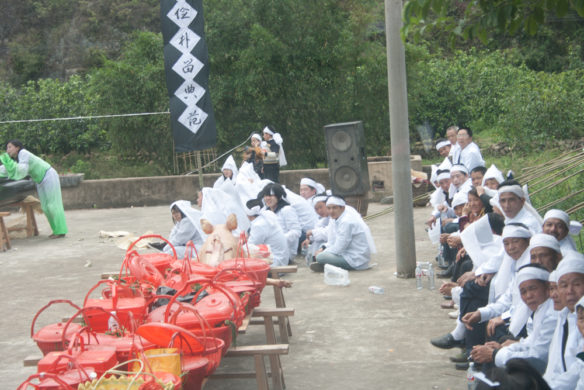
At one point, we passed a funeral full of weeping mourners dressed in white. The service was being broadcast on a loudspeaker and people hired as “criers” swelled the ranks.

The locals were as curious about us as we were about their funerary customs.
VISITING A MINNAN CLAN TULOU
We finally reached GHF’s Shengwu Lou Project, in neighboring Pinghe County. The area is quite remote and still undiscovered by tourists.
During the Tang dynasty (618–907 C.E.), a group of Minnan people settled in Fujian to escape warring barbarians in the north. The Shengwu Lou tulou was designed by the eighteenth generation of the Ye family (1798–1820) and used until 1875.
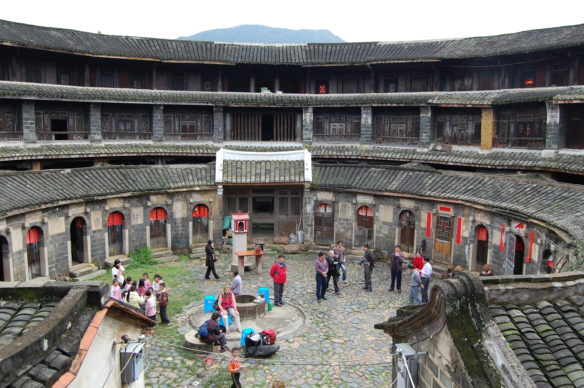
The layout of the three-story Minnan-style Shengwu Lu tulou is called “Unit Tulou.” It consists of fourteen units: twelve for individual families and two shared as public space.

Although architecturally different from the Hakka tulous, the Minnan examples were also designed to protect residents from invaders, with fortified walls, one entry gate, and a central (though smaller-scale) courtyard.
MEETING WITH LOCALS
In all of the cities we visited, GHF co-founder Jeff Morgan and his board were warmly welcomed. Here, the local villagers, representatives of the Chinese Academy of Cultural Heritage, and Pinghe County government officials expressed appreciation for the organization’s good intentions and efforts.

Jeff Morgan met with government officials everywhere we traveled.

Our group was joined by Chinese officials, including the Chief Architect of the China Academy of Cultural Heritage, who led us on a tour of the project.

Our visit to Shengwu Lou—as elsewhere—drew townspeople and children, who seemed happy and delighted and curious to see what was happening.
ARCHITECTURAL DETAILS
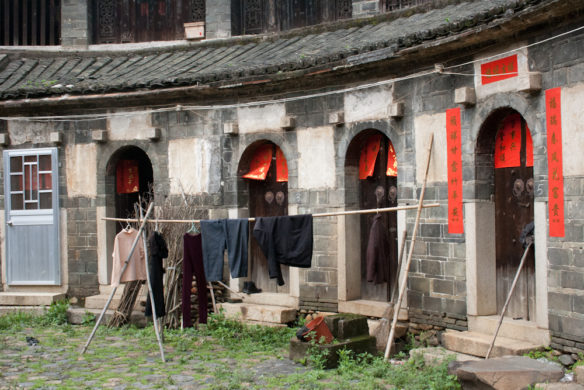
The living quarters within the compound reminded me of individual townhouses. Each had a private entrance and courtyard on the ground floor as well as its own cooking, dining, and living space.

On the second floor, the bedrooms opened onto a balcony; the third floor was for storage. This design seemed to offer more privacy for the family than that of the Hakka tulous.

Many of the Minnan tulous are weathered and deteriorating, and some elements have fallen prey to looters.
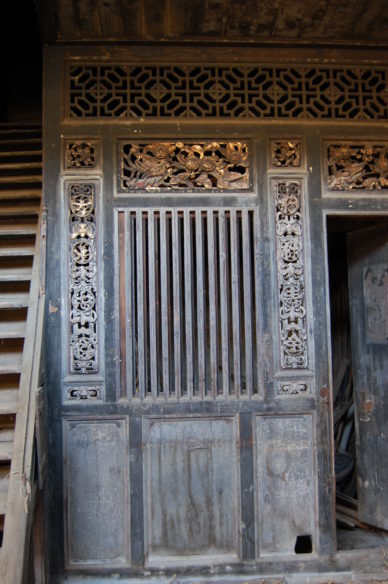
I profoundly hope that with the help of the GHF, the tulous will be preserved before they are lost forever.
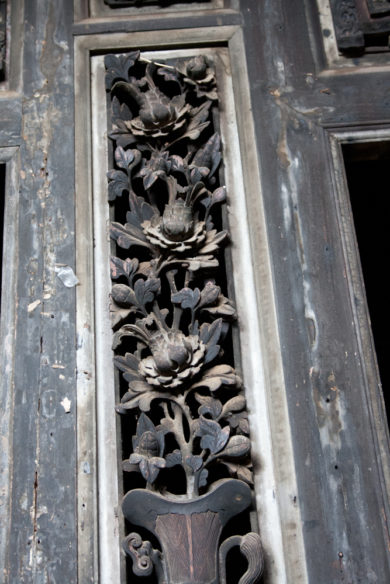
I was most impressed by the exquisite decorative elements I saw, including elaborate woodcarvings and polychrome wall paintings.

These drawings have managed to endure over time.
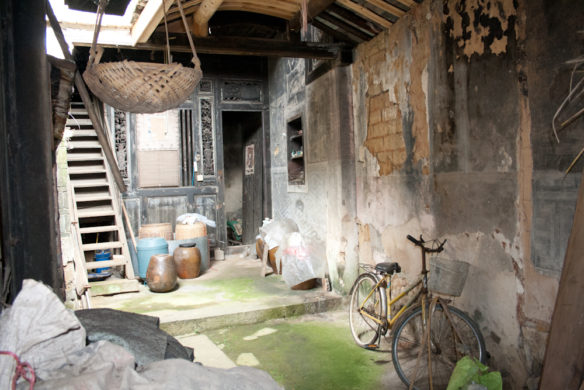
Although the Minnan tulou is a significant type of Fujian tulou, it has not yet been designated a UNESCO heritage site.

This former living space is now used for storage.
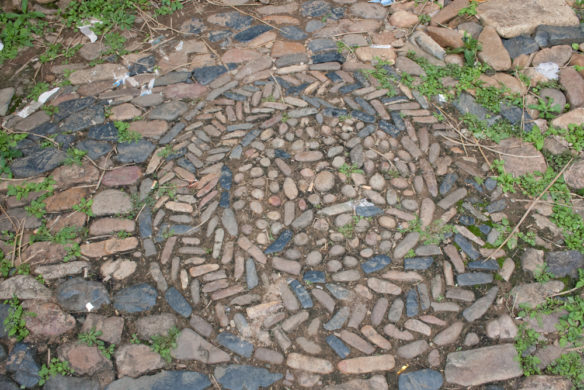
Even in in a remote countryside populated chiefly by farmers, the ubiquity of fine craftsmanship and decorative tradition is delightfully surprising.

These unusual baskets also caught my eye.

The Global Heritage Fund group.

The exterior of a Minnan tulou.
GIFTS OF BOOKS
Thanks to GHF board member Judy Koch, we created quite a stir in each village we visited. She brought along bags full of books to distribute to local children as part of Bring Me a Book, an organization she founded in l997 to share the gift of reading with disadvantaged children.
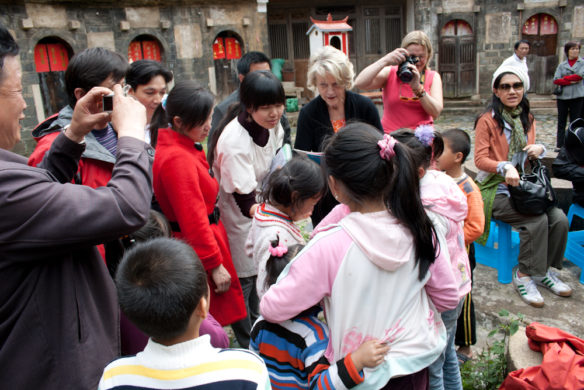
The children ran to see the “big noses,” as we and other foreigners were called, and showed their glee at receiving precious books to add to their libraries.

The goal of Bring Me a Book is to “promote greater family literacy, by providing convenient and easy access to a library of quality age- and culturally appropriate children’s books, and to create a heritage and tradition of reading at home.”
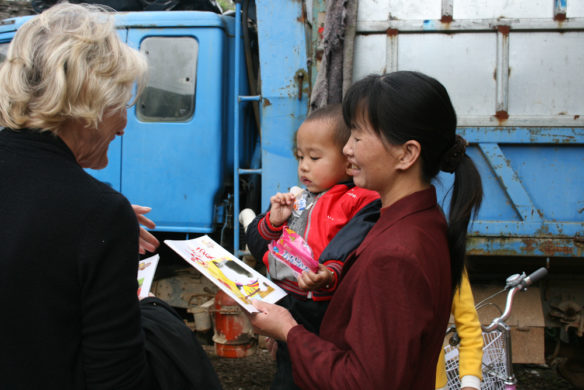
A happy book recipient.
MATRIARCHS OF THE VILLAGE
Spontaneously, two women standing in their doorway invited several of us to have tea with their family. Naturally, we accepted and had a memorable and intimate experience.
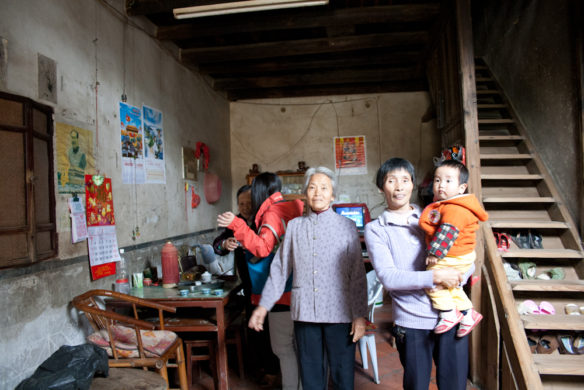
Graciously, the women invited us in for tea. Within the tulou was a TV tuned to a Chinese soap opera that the ladies watched while they cooked.
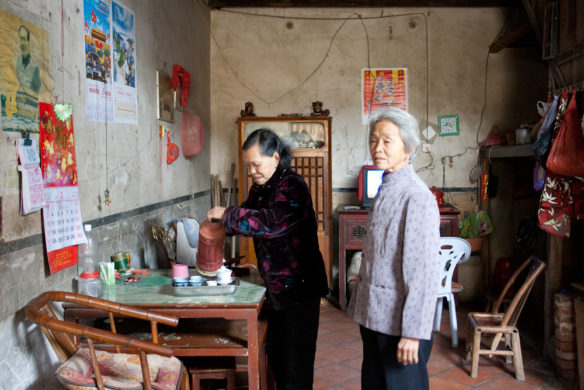
The ancient Minnan dialect spoken locally is distinct from Mandarin and Hakka, but does include the Mandarin term for “thank you”: xie xie. And we thanked them profusely.

The house was simple and clean, with a communal toilet and small kitchen downstairs and bedrooms upstairs. Customarily, shoes are removed when entering a house, to keep the area clean; here they were stored on the stairway.
OTHER TULOUS IN THE AREA
We visited several tulous in this village, some more rustic than others, some completely untouched, authentic, and beautiful even in their deteriorated state. Farmers still live in the area, but some of the old tulous have been abandoned.
Other sites close to Nanjing and Yongding also remain intact, still inhabited by families who have worked and lived there for generations. Jeff Morgan and GHF are hoping these will become protected sites.
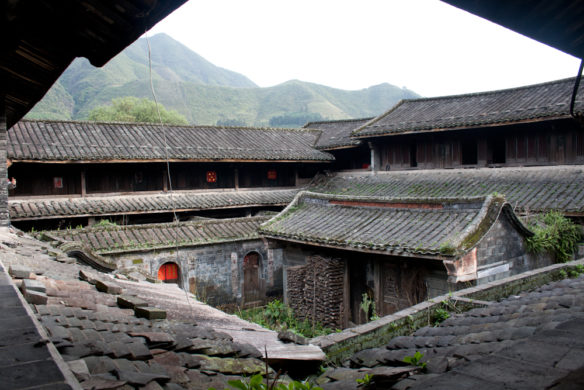
Jeff Morgan pointed out both historic and renovated tulous.
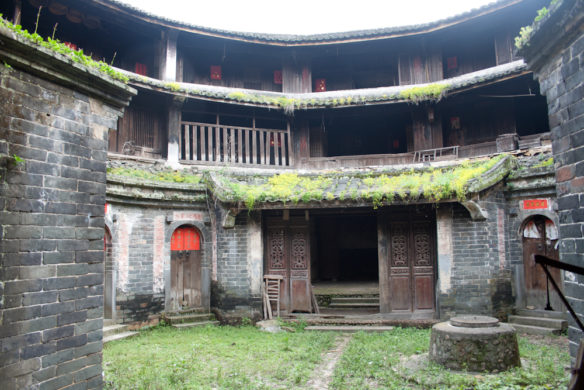
Ones that haven’t been nominated for preservation have been left to decay.
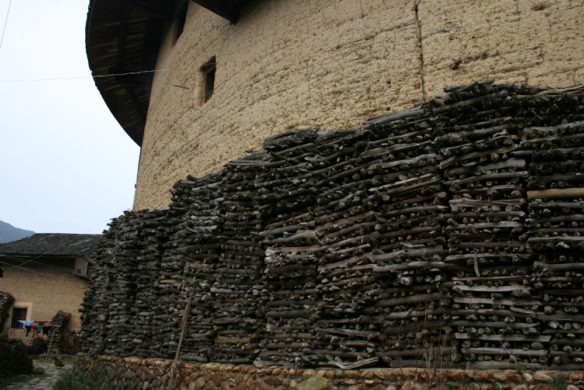
Local farmers stack their wood around the base of the tulou.
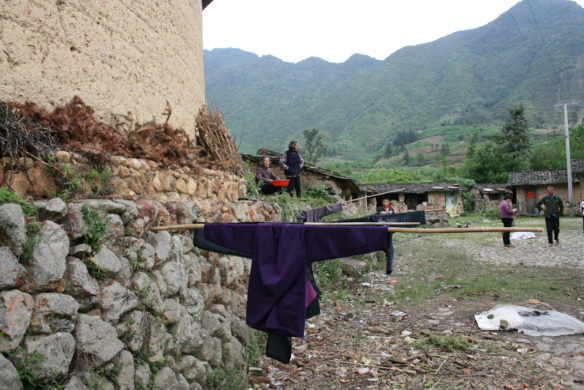
A perfectly clever way to dry clothes quickly.
GHF CONTRIBUTION
The villagers in these remote areas have lived here for generations, but have begun abandoning these structures and moving into town to find work. GHF hopes to help create alternative means of income for them so they can stay in their ancestral homes.
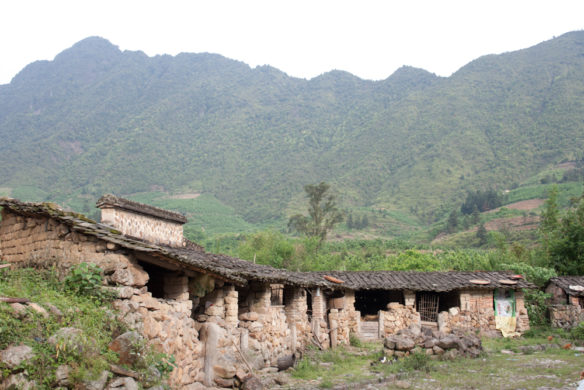
Amid verdant mountains, some historic farmhouses are still standing.

In addition to preparing a master conservation plan, GHF also works to protect the natural habitat of villages and their quality of life by controlling development that is incompatible with the existing architecture.

I noticed that everywhere in China, grandparents are very involved in taking care of the children.
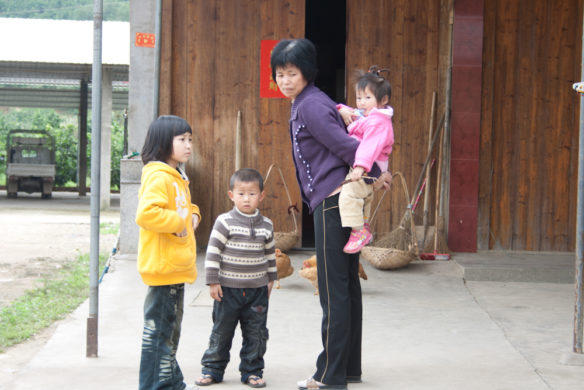
Another grandmother watching over the next generation.
TIAN LUO KENG TULOUS
As we started off on our long drive back to Xiamen, we stopped at the UNESCO-designated Tian Luo Keng tulou cluster, nicknamed Si Cai Yi Tang (“Four Dishes with a Soup”) for its four round structures and one square one.
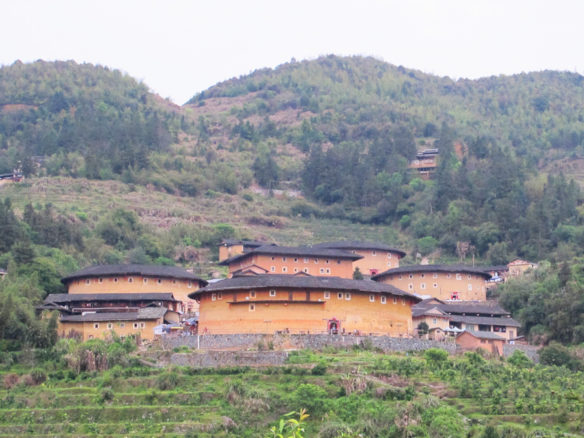
The square structure in the center of the Tian Luo Keng tulou—the Buyun, or “Reaching the Cloud,” building—was built in 1796, burned down by bandits in 1936, and rebuilt in 1953.

The newest structure in the cluster, Wenchang, was built in 1966.
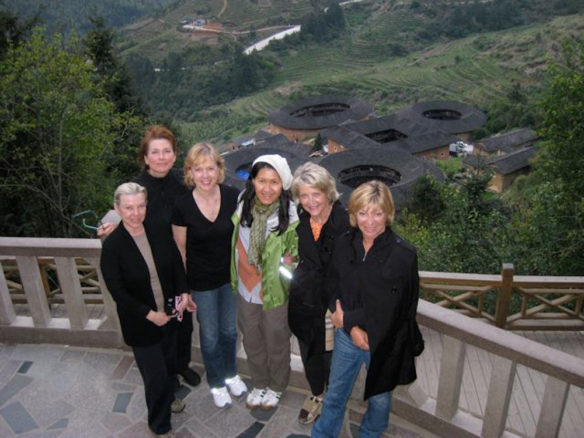
Jeanne Lawrence, Lucie Jay, Cathy McMurtry, Jasmine Arneja, Judy Koch, and Sandee McCaffrey hopped off the bus to get a better look at the tulou cluster.
The locals are proud of their heritage, concerned about protecting the architectural gems that surround them, and eager to see income from tourism supplement their livelihood as farmers.
Traveling with a group such as GHF, which has a purpose and a connection to the local people, is so much more enlightening than just a typical sightseeing tour.
PIZZA HUT DELIVERED
After a three-hour drive back to the Asia Gulf Hotel in Xiamen, where we had stayed a few days earlier, we arrived exhausted yet exhilarated from all we had seen.

Arriving back to the hotel around dinnertime, we were hungry and all had a yen for something other than Chinese food for a change.

After a day spent enthralled by wonders of the past, we were grateful for a very modern achievement—Pizza Hut delivery.
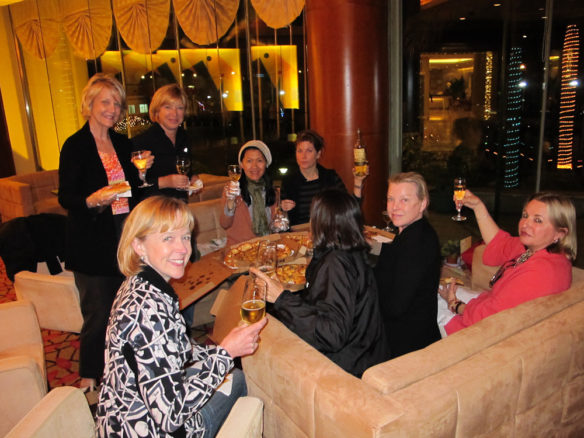
We enjoyed every bite, and it was just as good as if we were in the USA.
SOME THOUGHTS ON PRESERVATION
In this region, over the years additions have been added to historic buildings. Lately, the villagers have been removing or tearing down the add-ons to protect the authenticity of the original designs. Their hope—and that of GHF—is that, in conjunction with UNESCO’s support, China will tap its own resources to protect its heritage.
Many citizens in Shanghai and Beijing now regret that the government razed so much historic architecture over the years and replaced it with modern high-rises. In the last decade alone, hundreds of buildings in Nanjing, Beijing, and Shanghai have been destroyed and thousands of people relocated.
China might do well to take a page from the American playbook. Those cities in the U.S. that have gone out of their way to preserve their historic sections—including New York and San Francisco—have reaped the benefit of millions of tourist dollars each year. It wouldn’t take a lot of money to protect China’s historic sites, and the upside is clear. We can only hope that the government will take action before time takes an irreparable toll. GHF is doing all that it can to inspire such action.
In my next post, I share my experiences on Day 4, when we traveled north to the ancient walled city of Pingyao. This would prove to be my favorite part of the whole trip!
LINKS TO OTHER POSTS IN THIS SERIES
Part 1: Days 1 and 2 in Fujian Province—Visiting the Hakka tulous, ancient earthen residences
Photographs by Jeanne Lawrence.
*Urbanite Jeanne Lawrence reports on lifestyle and travel from her homes in San Francisco, Shanghai, and New York, and wherever else she finds a good story.
